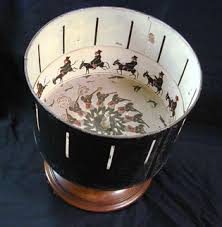Workshop
We were introduced to the art of animation this week. This was done through a video clip of shadow puppets. This showed the importance of a second aspect of art. In this case, it was audio. Through adding audio, a stronger mood was created for the animation.

Throughout the workshop, we were able to engage with several forms of animation.
We first started off by looking at sand animation as a class. This was done by using sand and light boxes along with a camera to create a stop motion animation.
One student started off by drawing a line in the sand. Once this had been done, pictures would be taken of the process.

Then the student would add another line in the sand. Again, a picture would be taken.
This was continued until there was somewhere between 25 and 30 pictures showing the process of making the “picture.” This was then made into an animation for the whole class to see.
We then split into groups to create our own animations. My group decided to draw a picture on the blackboard with chalk. Unfortunately, we were unable to create an animation. However, we had the intention of creating a flipbook with the pictures we had drawn.
https://www.youtube.com/watch?v=pFx-kpYxY64
We also learned about the different types of animation there was available. These included:
- Computer animation
- Flipbooks
- Stop motion – drawing, clay, playdough, paper etc.
- Thaumatrope
- Phenakistoscope
- Zoetrope


Teaching Animation in the Primary Setting
“The first purpose of animation in academics is to fulfil a cognitive function. Secondly, as an affective learning tool that attracts attention, engages the learner, and sustains motivation aspect.”(Amjad Desai, 2012).
When thinking about how I could teach animation in the classroom, I first had to consider the resources available. I feel that having a theme for animation would be a good way to engage pupils.
For example, they could perhaps pick their favourite TV show and create characters from that. Maybe the whole class could choose a theme and then each pupil make a character. Once they have made their characters, they could work together as a class to create an animation. this would be effective as a shadow puppet show that pupils could perform.
References:
Desai, A. (2012) Animation in education [Online]. Animation. Available: http://www.cgpundit.com/animation-in-education/ [Accessed 7 Mar 2016].
